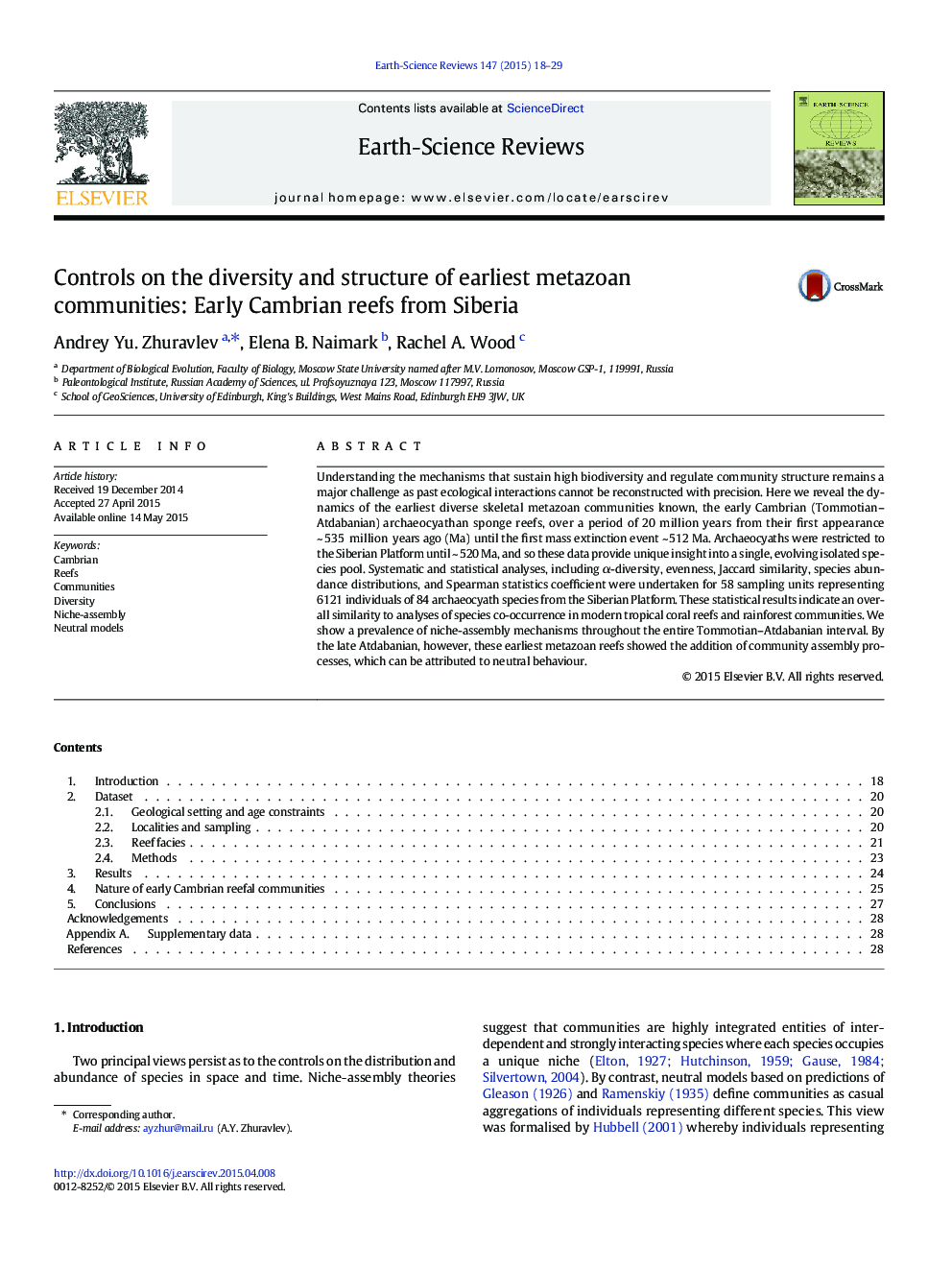| Article ID | Journal | Published Year | Pages | File Type |
|---|---|---|---|---|
| 4725707 | Earth-Science Reviews | 2015 | 12 Pages |
Understanding the mechanisms that sustain high biodiversity and regulate community structure remains a major challenge as past ecological interactions cannot be reconstructed with precision. Here we reveal the dynamics of the earliest diverse skeletal metazoan communities known, the early Cambrian (Tommotian–Atdabanian) archaeocyathan sponge reefs, over a period of 20 million years from their first appearance ~ 535 million years ago (Ma) until the first mass extinction event ~ 512 Ma. Archaeocyaths were restricted to the Siberian Platform until ~ 520 Ma, and so these data provide unique insight into a single, evolving isolated species pool. Systematic and statistical analyses, including α-diversity, evenness, Jaccard similarity, species abundance distributions, and Spearman statistics coefficient were undertaken for 58 sampling units representing 6121 individuals of 84 archaeocyath species from the Siberian Platform. These statistical results indicate an overall similarity to analyses of species co-occurrence in modern tropical coral reefs and rainforest communities. We show a prevalence of niche-assembly mechanisms throughout the entire Tommotian–Atdabanian interval. By the late Atdabanian, however, these earliest metazoan reefs showed the addition of community assembly processes, which can be attributed to neutral behaviour.
